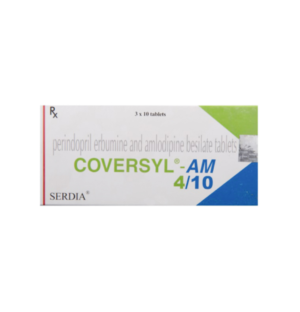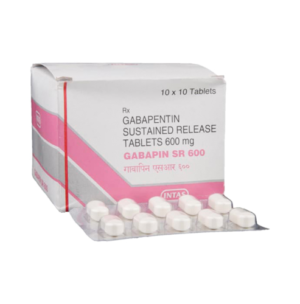What is this drug used for?
• It is used to treat HIV infection.
• This drug is taken with other drugs. Be sure you know about the warnings, benefits, and risks of these other drugs. Talk with the doctor if you have questions or concerns about any of the drugs.
Frequently reported side effects of this drug
• Muscle pain
• Joint pain
• Back pain
• Nausea
• Vomiting
• Diarrhea
• Abdominal pain
• Heartburn
• Passing gas
• Change in taste
• Numbness or tingling of hands or feet
• Numbness or tingling of mouth
Other side effects of this drug: Talk with your doctor right away if you have any of these signs of:
• Liver problems like dark urine, fatigue, lack of appetite, nausea, abdominal pain, light-colored stools, vomiting, or yellow skin.
• Pancreatitis like severe abdominal pain, severe back pain, severe nausea, or vomiting.
• High blood sugar like confusion, fatigue, increased thirst, increased hunger, passing a lot of urine, flushing, fast breathing, or breath that smells like fruit.
• Severe diarrhea
• Chest pain
• Fast heartbeat
• Abnormal heartbeat
• Dizziness
• Passing out
• Flushing
• Bruising
• Bleeding
• Sweating a lot
• Severe loss of strength and energy
• Swelling
• Blurred vision
• Change in body fat
• Stevens-Johnson syndrome/toxic epidermal necrolysis like red, swollen, blistered, or peeling skin (with or without fever); red or irritated eyes; or sores in mouth, throat, nose, or eyes
• Signs of a significant reaction like wheezing; chest tightness; fever; itching; bad cough; blue skin color; seizures; or swelling of face, lips, tongue, or throat.
Note: This is not a comprehensive list of all side effects. Talk to your doctor if you have questions.
Pronunciation
(ri TOE na veer)
Medication Safety Issues
Sound-alike/look-alike issues:
Ritonavir may be confused with Retrovir
Norvir may be confused with Norvasc
High alert medication:
This medication is in a class the Institute for Safe Medication Practices (ISMP) includes among its list of drug classes that have a heightened risk of causing significant patient harm when used in error
Product Availability
Norvir capsules have been discontinued in the United States for more than 1 year.
Storage and Stability
Capsule: Store under refrigeration at 2°C to 8°C (36°F to 46°F); may be left out at room temperature of <25°C (<77°F) if used within 30 days. Protect from light. Avoid exposure to excessive heat. Dispense in original container.
Oral powder: Store at ≤30°C (86°F).
Solution: Store at 20°C to 25°C (68°F to 77°F); do not refrigerate. Avoid exposure to excessive heat. Keep cap tightly closed.
Tablet: Store at ≤30°C (86°F); exposure to temperatures ≤50°C (122°F) permitted for ≤7 days. Exposure to high humidity outside of the original container (or a USP equivalent container) for >2 weeks is not recommended.
Adverse Reactions
Cardiovascular: Edema (including peripheral edema), flushing, hypertension, syncope, vasodilation
Central nervous system: Anxiety, confusion, depression, disturbance in attention, dizziness, drowsiness, fatigue, headache, insomnia, malaise, paresthesia, peripheral neuropathy
Dermatologic: Acne vulgaris, diaphoresis, pruritus, skin rash
Endocrine & metabolic: Hypercholesterolemia, increased serum triglycerides, increased uric acid, lipodystrophy (acquired)
Gastrointestinal: Abdominal pain, anorexia, diarrhea, dysgeusia, dyspepsia, flatulence, gastrointestinal hemorrhage, increased serum amylase (pediatric), nausea, throat irritation (local), vomiting
Hematologic & oncologic: Anemia (pediatric), neutropenia (pediatric), thrombocytopenia (pediatric)
Hepatic: Hepatitis, increased gamma-glutamyl transferase, increased serum ALT, increased serum AST
Hypersensitivity: Hypersensitivity reaction
Neuromuscular & skeletal: Increased creatine phosphokinase, musculoskeletal pain (arthralgia and back pain), myalgia, weakness
Ophthalmic: Blurred vision
Renal: Polyuria
Respiratory: Cough, oropharyngeal pain, pharyngitis
Miscellaneous: Fever
Rare but important or life-threatening: Adrenal suppression, adrenocortical cortex insufficiency, anaphylaxis, amnesia, angioedema, aphasia, asthma, atrioventricular block (first, second, or third degree), cachexia, cerebral ischemia, chest pain, cholestatic jaundice, coma, Cushing’s syndrome, dementia, depersonalization, diabetes mellitus, diabetic ketoacidosis, esophageal ulcer, gastroenteritis, gastroesophageal reflux disease, gout, hallucination, hematologic disease (myeloproliferative), hemorrhage (in patients with hemophilia A or B), hepatic coma, hepatitis, hepatomegaly, hepatosplenomegaly, hyperglycemia, hypotension, hypothermia, hypoventilation, immune reconstitution syndrome, intestinal obstruction, leukemia (acute myeloblastic), leukopenia, lymphadenopathy, lymphocytosis, malignant melanoma, manic behavior, myocardial infarction, neuropathy, orthostatic hypotension, palpitations, pancreatitis, paralysis, pneumonia, prolongation P-R interval on ECG, prolonged Q-T interval on ECG, pseudomembranous colitis, rectal hemorrhage, redistribution of body fat, renal failure, renal insufficiency, right bundle branch block, seizure, Stevens-Johnson syndrome, subdural hematoma, syncope, tachycardia, torsades de pointes, toxic epidermal necrolysis, ulcerative colitis, vasospasm, venous thrombosis (cerebral)
–




